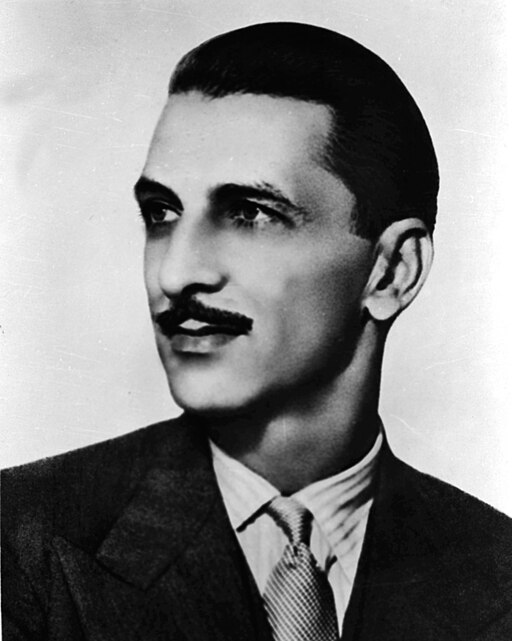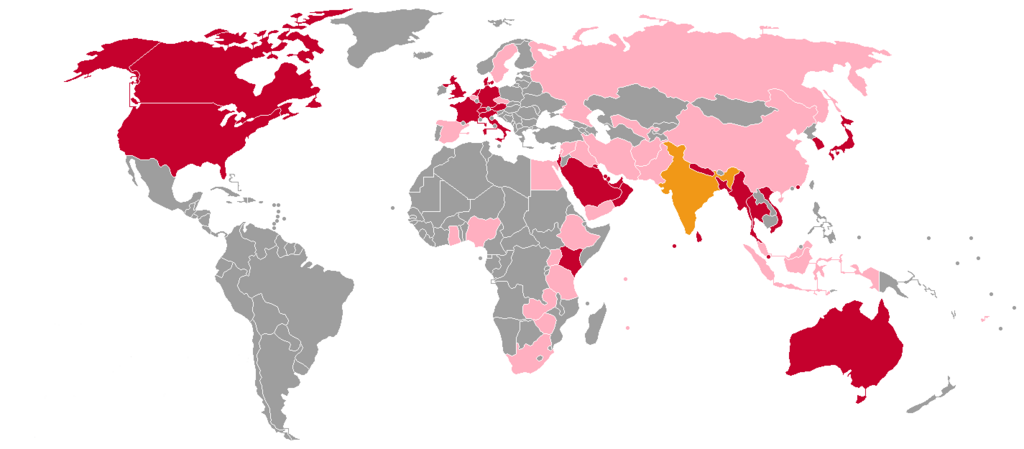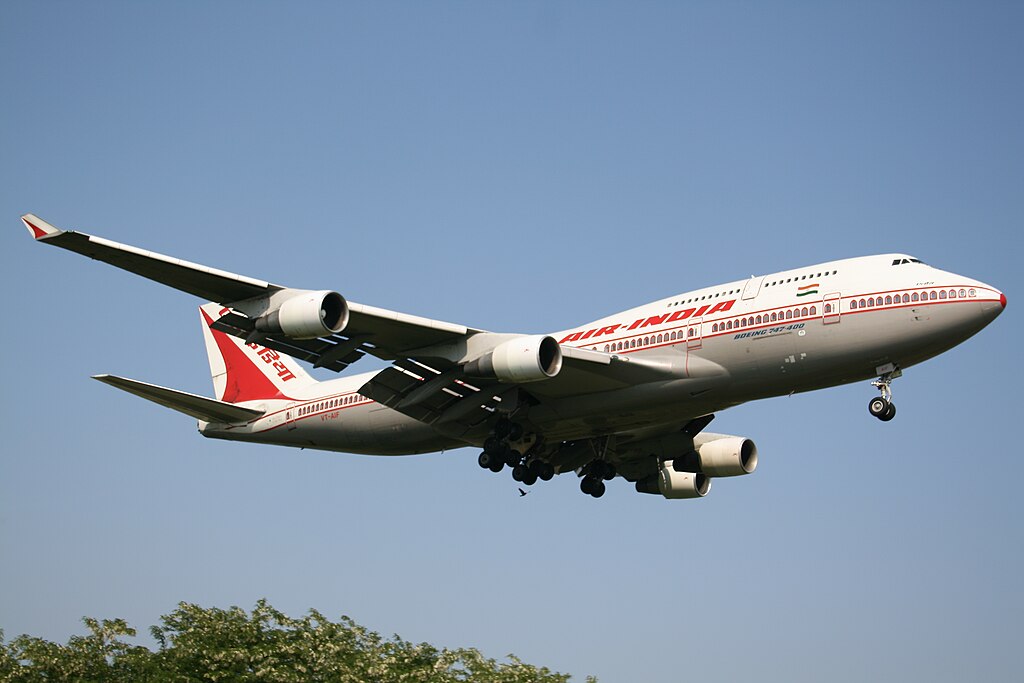There was a time when Air India was considered one of the best airlines in the world. A survey conducted by the Daily Mail in 1968 revealed that Air India “topped the list of airlines in the world” . In fact, in that same year, three-fourths of Air India’s passengers were foreigners who came from countries with their own airlines. However, today, the situation is dire. after incurring hundreds of millions in losses, the government was forced to sell the airline, reported the BBC:
“The Tatas paid nearly $2.4bn (£1.7bn) after the government made the terms of the debt less onerous for the buyer…..The handover brings to an end a years-long attempt to sell Air India, which has racked up losses worth $9.5bn…..The government said running the airline was incurring losses of nearly $2.6m every day….Apart from its fleet of over 130 aircraft, the new buyer will now have control of the airline’s 4,400 domestic and 1,800 international landing and parking slots at domestic airports, as well as 900 slots at airports overseas. ”
How did this once-glorious carrier fall from its grace of an exalted airline? In this article, we will explore the fascinating story of Air India.
The Early Days of Indian Aviation

Photo: Mila Daniel | Wikimedia Commons
According to the Smithsonian National Postal Museum, French pilot Henri Pequet, a French pilot, carried the first official mail flown by airplane (on February 18, 1911):
” The flight occurred in India. Pequet carried a sack with about 6,000 cards and letters on his Humber biplane. The plane flew a distance of five miles, from an Allahabad polo field, over the Yamuna River, to Naini. All mail received a special cancel depicting an airplane, mountains, and “First Aerial Post, 1911, U. P. Exhibition Allahabad. Pequet was in India flying demonstration flights for the United Provinces Exhibition in Allahabad. Walter Windham (1868-1942), a British aviation pioneer, organized the aerial demonstrations. The event marked the first time airplanes flew in India.”
Almost 20 years later, Air India was established (in 1932). On October 15, 1932, JRD Tata flew the first Air India plane (which was then known as Tata Airlines) from Karachi to Mumbai.
Air India operates over 6,000 miles of routes. Here are a few pieces of history of the airline, which saw some clorious days when jet travel brought the East and West closer together, allowing passengers crossing the Atlantic to enjoy the beauty of the Orient alongside the comfort expected from air travel.
The Vision of JRD Tata

Photo: http://photodivision.gov.in/IntroPhotodetails.asp?thisPage=953 | Wikimedia Commons
Three years before this flight, JRD Tata became the first Indian to acquire a flying license, reported NDTV:
“On February 10, 1929, JRD ‘Jeh’ Tata earned the first commercial aviator’s certificate in India, fulfilling a dream that he had nurtured since he was 15 and setting the stage for the much bigger dream of giving wings to the nation…..JRD Tata was 24 when a flying club opened in Mumbai (then Bombay). He became the first Indian to pass out with ‘No. 1’ endorsed on his flying licence and, three years later, famously piloted the first flight in the history of Indian aviation. On October 15, 1932, the Air India flight (then known as Tata Air Services) took off from Karachi’s Drigh Road Aerodrome and flew to Mumbai’s Juhu Airstrip. “
Flying was his passion, and he dreamed of bringing civil aviation to India. However, achieving this dream required cooperation from the government, especially against the backdrop of the British empire that was presiding over India back then. As the British government wasn’t enamored with aligning to Tata’s ambitions, JRD found the aegis of Sir Dorabji Tata, who later invested in JRD Tata’s vision.
Eventually, he approached the government with a simple proposal: they didn’t need financial support to run an airline – all they wanted was an aircraft and a permission to fly. The British government finally agreed, leading to the birth of Tata Airlines.
The Birth of Tata Airlines
The first Tata Airlines flight carried 25 kg of letters from Karachi to Bombay, and was piloted by JRD Tata himself. It is even said that on this first flight, people were seated atop the heaps of letters. In the same year, Tata Airlines began domestic flight operations for passengers, with a return ticket from Bombay to Madras costing ₹256—a significant amount in today’s money.
In 1946, Tata Airlines was renamed Air India and became a public limited company, allowing the public to purchase shares. In 1948, after India gained independence, the new Indian government acquired 49% of Air India’s shares. During this time, JRD Tata also launched Air India International for international flights.
Nationalization of Air India
A significant turning point occurred in 1953 when the Indian government decided to nationalize the entire airline sector. This decision was disheartening for JRD Tata, as it meant that all Indian airline companies would become government-owned. The government merged eight domestic airlines into one, with the merged airlines being:
- Air India (1946 — formerly, Tata Airlines, the first airline of India — incorporated in 1933)
- Deccan Airways (India’s second domestic airline)
- Airways India
- Bharat Airways
- Himalayan Aviation
- Kalinga Air Lines
- Indian National Airways
- Air Services of India
Additionally, Air India International was nationalized and became a public sector unit owned by the government. Nationalizing major sectors in the 1950s was a key policy of the Nehru government, aimed at supporting industries to foster progress in the country. However, this shift also meant that private businessmen and investors lost control over the airline industry.
The Rise and Fall of Air India: A Tale of Glory and Decline

Photo: Yellow alligator | Wikimedia Commons
The Nationalization of Air India
The nationalization of Air India in 1953 marked a significant turning point in its history.
- Industrialists and large businessmen, including JRD Tata, were understandably unhappy with this decision.
- Interestingly, JRD Tata and Pandit Jawaharlal Nehru were good friends. Nehru, who always encouraged scientific progress in the country, was pleased with how Air India had transformed civil aviation in India.
- Conversely, JRD Tata admired Nehru but felt betrayed when the government passed the Air Corporations Act, which nationalized Air India.
Tata had always opposed nationalization. In one of the interviews, JRD TATA Said
“Nationalization of industries, the way it is done, made me oppose the nationalization of industries, though I accept that some activities must be done by the state.” Whenever he attempted to discuss this issue with Nehru, the Prime Minister would turn his attention elsewhere. Tata recalled, “The moment I began something, he’d turn around and look out of the window. And I got the message.“
Later, Nehru wrote a letter explaining the rationale behind the decision, stating that the Congress party had wanted to nationalize the airline for over 20 years but had been unable to do so. He believed that nationalization would ultimately benefit the country, even though JRD Tata disagreed. Despite his opposition, When Air India was nationalized in 1953, Tata was retained as chairman, a position that he held until 1978.
The Glory Days of Air India
During the 1950s and 1960s, Air India was often referred to as a “Palace in the Sky.” Passengers enjoyed caviar on ice, the finest steaks, champagne, and menus crafted by chefs from the Taj Hotel. The airline was known for its grand lounges, designed by artists from Shantiniketan. JRD Tata played a crucial role in ensuring that Air India maintained its high standards, often flying on its flights to monitor service quality. If he noticed any imperfections, such as a dirty corner, he would take immediate action.
Mascot of the Maharaja in Air India

Photo: Shakti | Wikimedia Commons
One of the most iconic symbols of Air India was its mascot, the Maharaja, conceptualized in 1946 by Bobby Kooka, the airline’s Commercial Director. The Maharaja became a recognizable figure, appearing on postcards, stationery, and advertisements, symbolizing the airline’s commitment to hospitality and Indian culture.
Air India was not just an airline; it represented India on the international stage. It was associated with Indian culture, art, and hospitality. The airline boasted an impressive art collection of over 8,000 works, including paintings, textiles, and sculptures, accumulated over 60 years. This collection was a strategic move to differentiate Air India from its competitors, as there were few international airlines at the time.
These stories illustrate how special Air India was during its prime. Indian travelers were often loyal to the airline, making its subsequent decline all the more shocking.
The Recent Crisis
Despite its glorious past, Air India has faced a severe crisis over the last 20 to 30 years. The airline has incurred massive losses, raising questions about the sources of these financial troubles. Understanding the factors that led to Air India’s decline is crucial to grasping the complexities of the Indian aviation industry and the challenges it faces today:
- In 2007, Air India and Indian Airlines reported losses of ₹5.41 billion and ₹2.31 billion, respectively.
- As both airlines were government-owned public sector units, these losses had to be absorbed by the government.
- In an attempt to mitigate these financial woes, the government decided to merge the two airlines in an entity known as National Aviation Company of India Ltd.
Reasons for the Financial Crisis

Photo: Fasilo | Wikimedia Commons
When the merger of the two powerhouse carriers of India occurred, the government had already acquired a large fleet of aircraft of various specifications and sizes, costing approximately ₹440 billion. This significant investment in new airplanes, coupled with rising salary expenses, contributed to the airline’s financial difficulties.
- The airline faced strikes from pilots demanding fair salaries, which further impacted operations.
- Flights were grounded due to the absence of pilots, leading to revenue losses. In the following years, the government made several poor decisions regarding Air India.
- As passenger revenue declined year-on-year—largely due to increased competition from new international airlines—Air India opted to expand its international routes, expecting to attract more passengers. However, these new routes turned out to be unprofitable.
Moreover, it has been suggested that Air India hired 11,433 employes as against the envisaged requirement of 7245. leading to unnecessary salary expenditures. Jitender Bhargava, a former Executive Director of the company, noted that
“We also can’t overlook the fact that even as a government-owned airline under JRD Tata’s leadership the airline was performing exceptionally well till 1978. The distinguishing fact being that it was then managed by professionals.”
During this period, changes in top management led to a decline in the rigorous training of cabin crew members. In-flight service, once a hallmark of Air India, suffered as a result. The lack of proper training and a more lenient recruitment process led to increased expenses and a decline in service quality, prompting passengers to seek alternatives.
Management Challenges and Government Interference

Photo:
Over the decades, disagreements between the government and Air India’s management became increasingly common.
- As a public sector unit, Air India was bound to follow government directives, which often lacked industry expertise.
- For instance, in 2007, the government allocated millions of Air India’s funds for advertising, despite management’s belief that such spending was unwarranted at that time.
This situation highlights a strong argument in favor of privatization. Since Air India was a government-owned entity, decision-making authority rested with politicians and bureaucrats who often lacked the necessary knowledge of the airline industry. Questions arose regarding which aircraft to purchase, how many to buy, and which routes to operate. The incompetence of those in leadership positions hindered effective decision-making, as they lacked both experience and motivation.
The Shift from Nationalization to Privatization

Photo:
Despite the nationalization of Air India in the early 1950s, the airline thrived until the 1970s, becoming a world-renowned carrier. This success can be attributed to effective management, particularly under JRD Tata, who founded the airline and was motivated to maintain its high standards. The story of Air India, therefore, is less about the merits of privatization versus nationalization and more about the consequences of poor management and decision-making—issues that can arise in both public and private sectors. In the bordering country of Nepal, Nepal Airlines, a once-glorious carrier of the Himalayan nation also saw massive corruption in the government-run carrier.
History of Nepal Airlines Corporation: How Politics Destroyed it
In 2017, the government decided to privatize Air India. By March 31, 2020, the airline had accumulated losses exceeding ₹700 billion, a burden that made it increasingly difficult for the government to sell the airline. However, on October 8, 2021, the government successfully sold Air India back to Tata for ₹180 billion. This decision was celebrated as a return of the airline to its original owners.
The Future of Air India
Only time will tell if Air India can reclaim its former glory and identity in the aviation world. It is worth noting that many of the best airlines today, such as Singapore Airlines, Emirates, and Etihad, are government-controlled. These airlines also rank among the busiest in the world. Carriers like Lufthansa and Japan Airlines, are privately owned. Ultimately, the success of an airline hinges on effective decision-making and management rather than its ownership structure.
In conclusion, the story of Air India serves as a cautionary tale about the importance of competent leadership and sound decision-making in the aviation industry. What are your thoughts on the future of Air India and the impact of management on its success?
